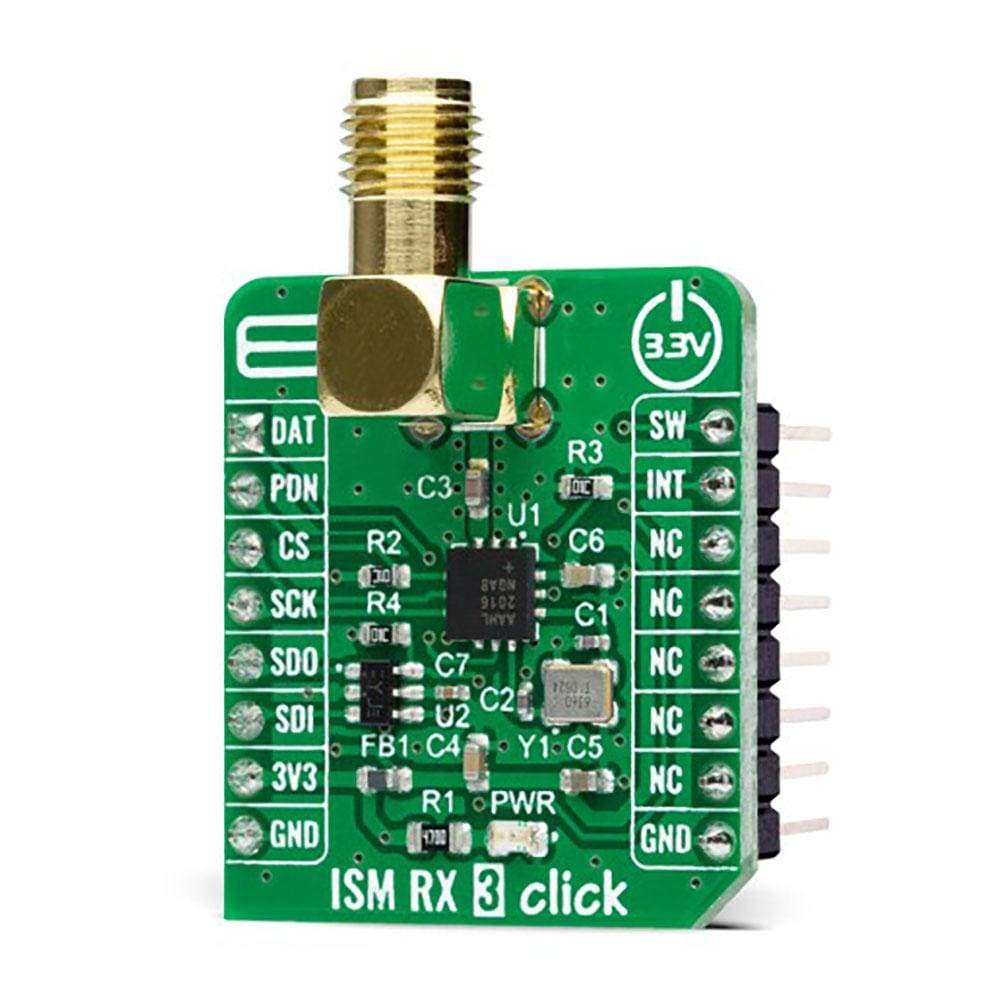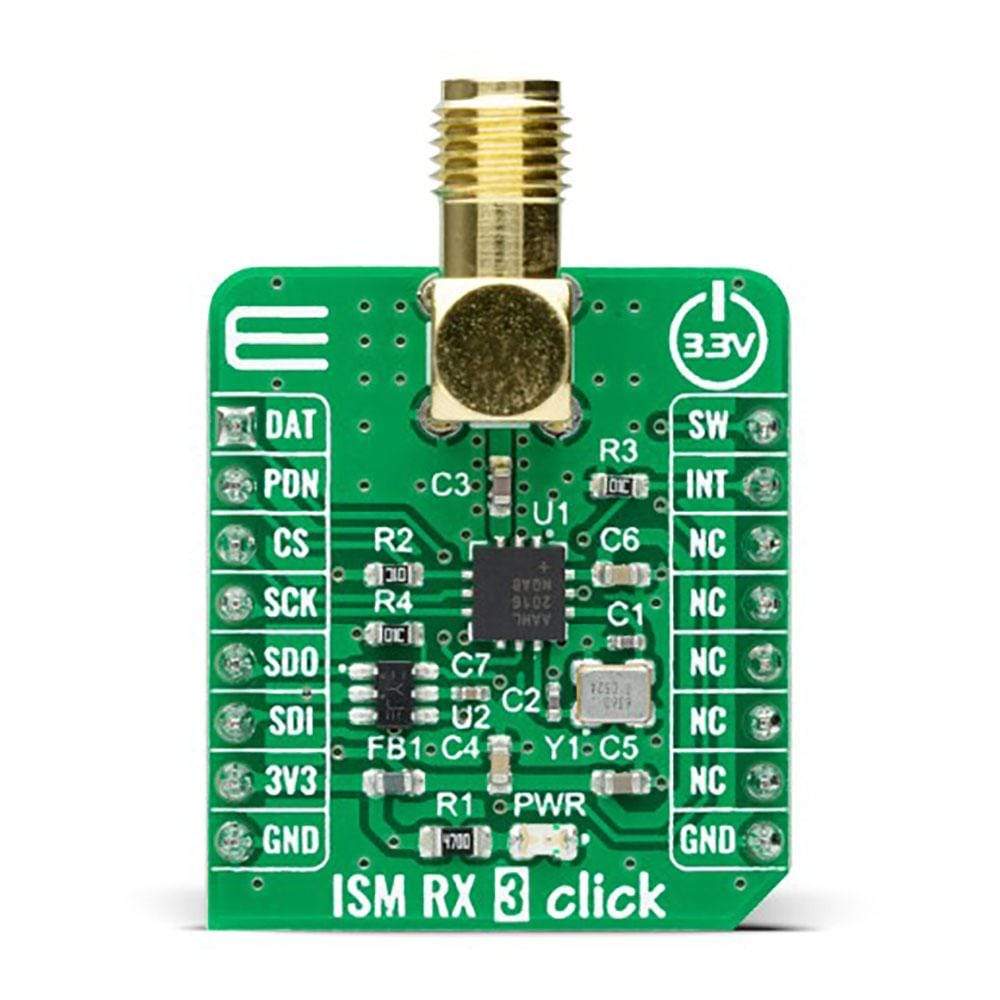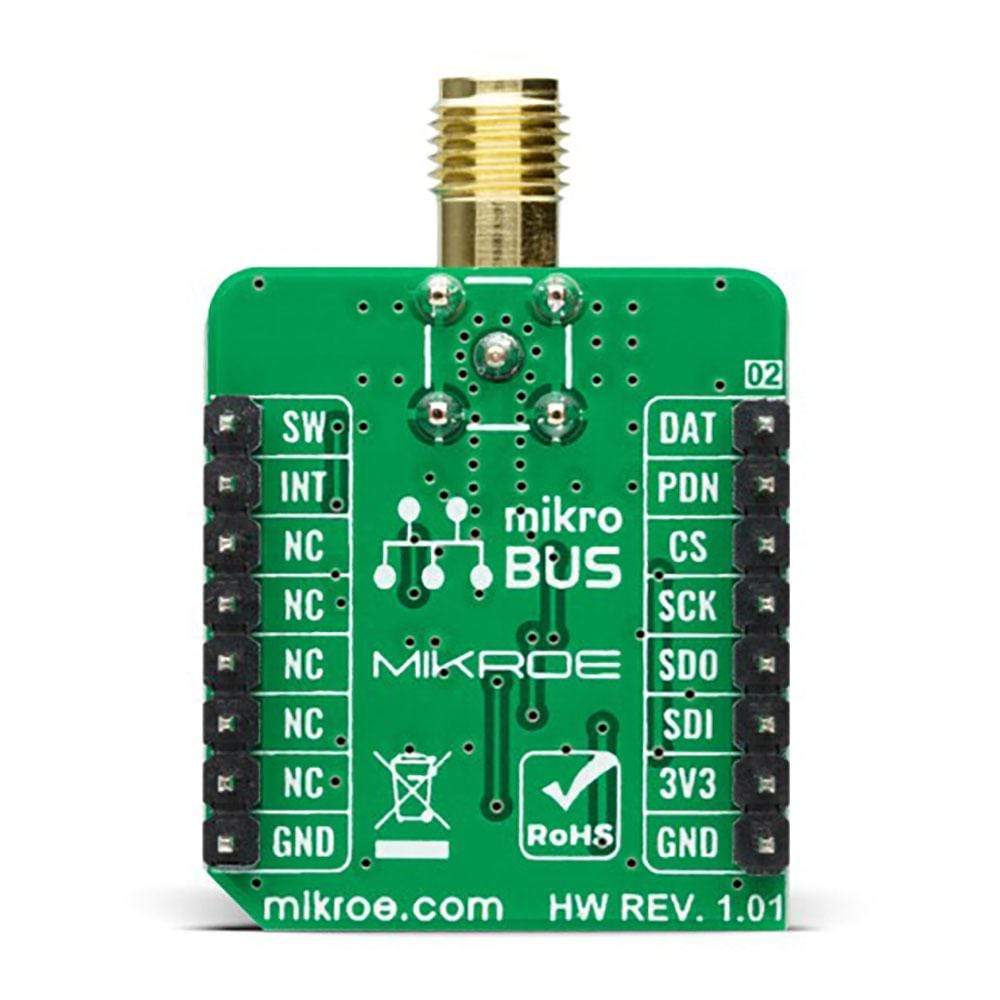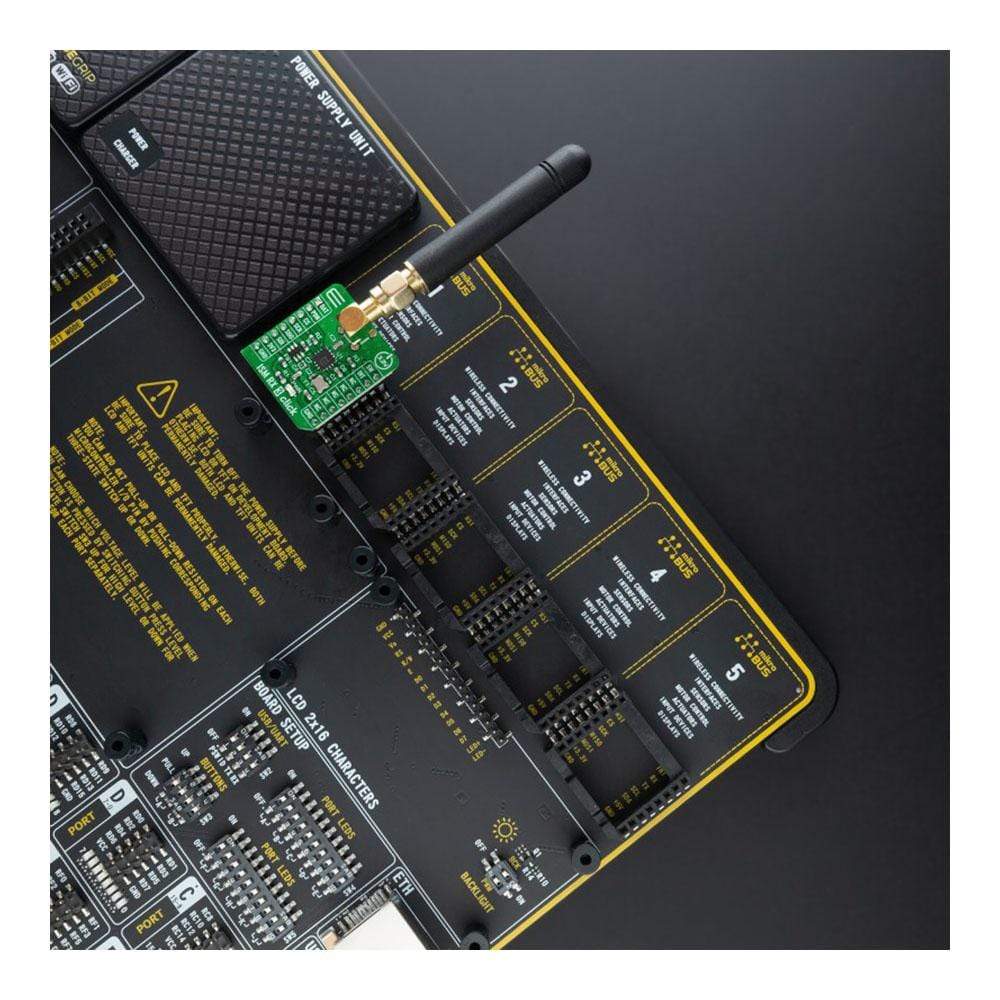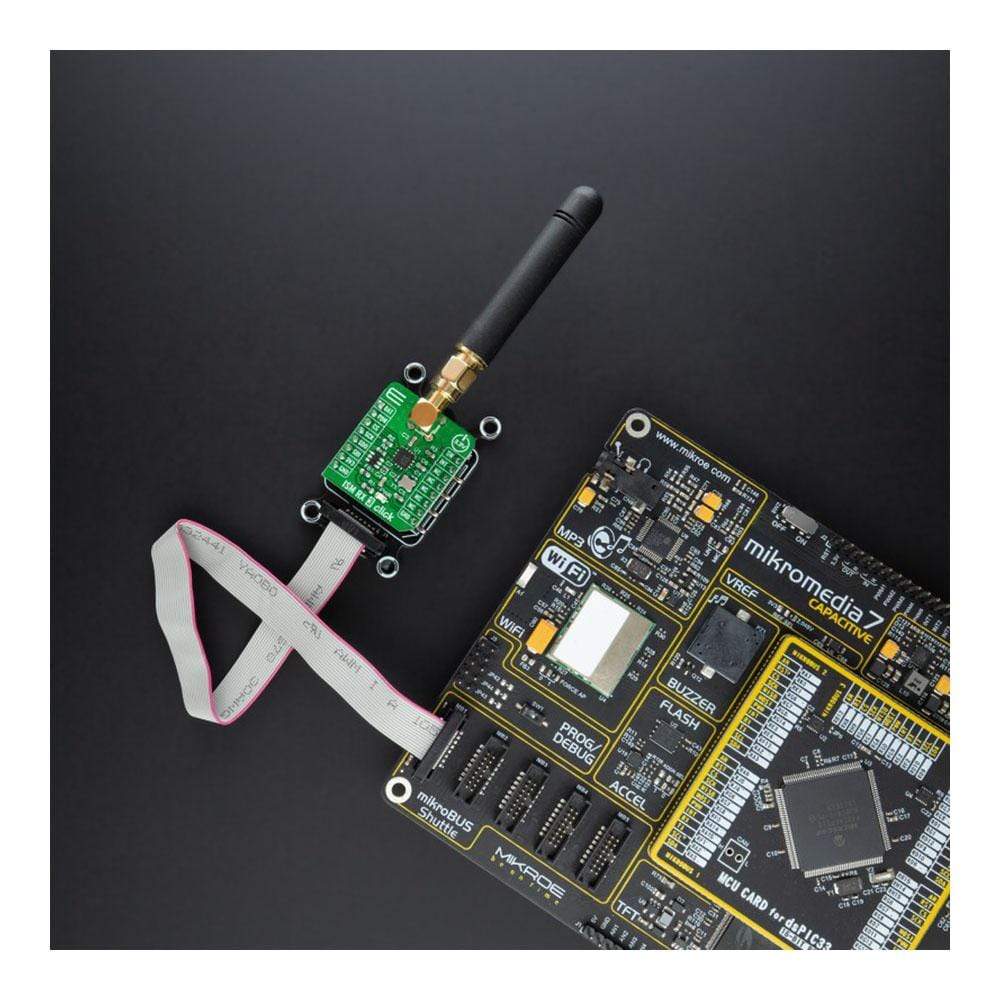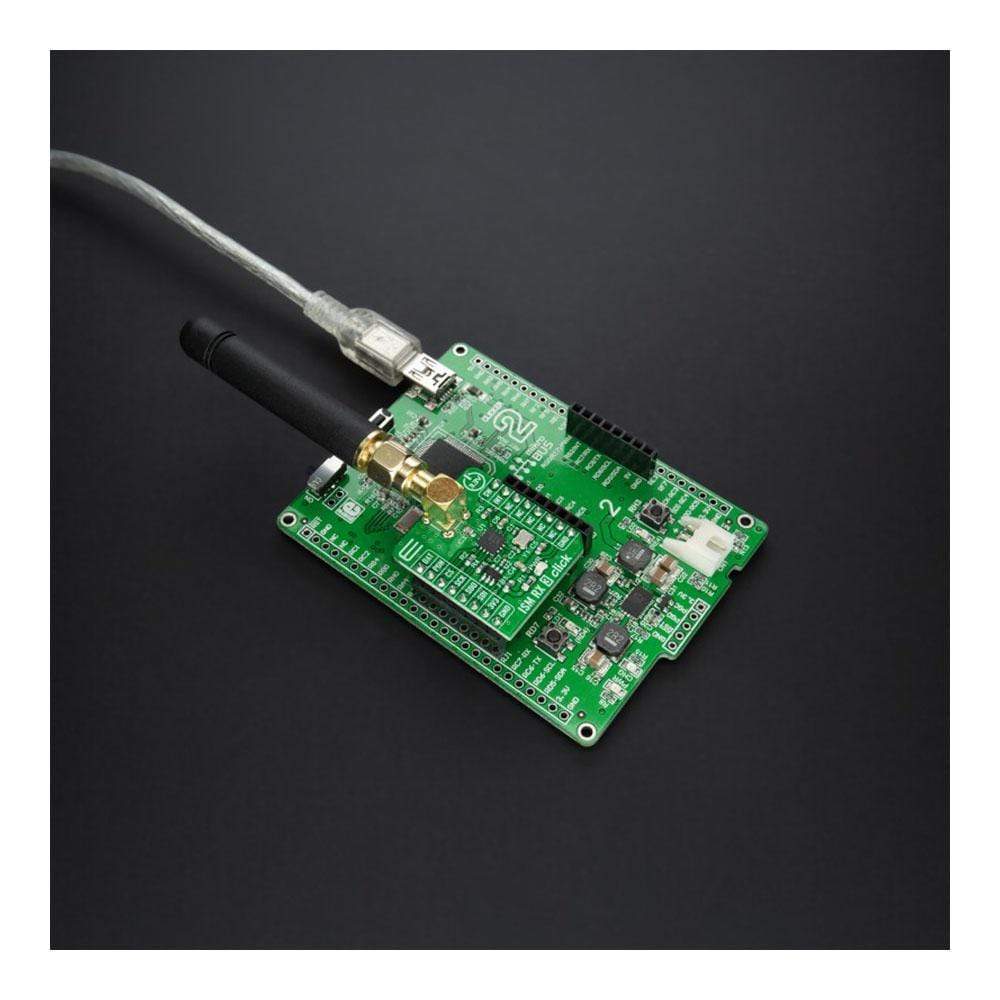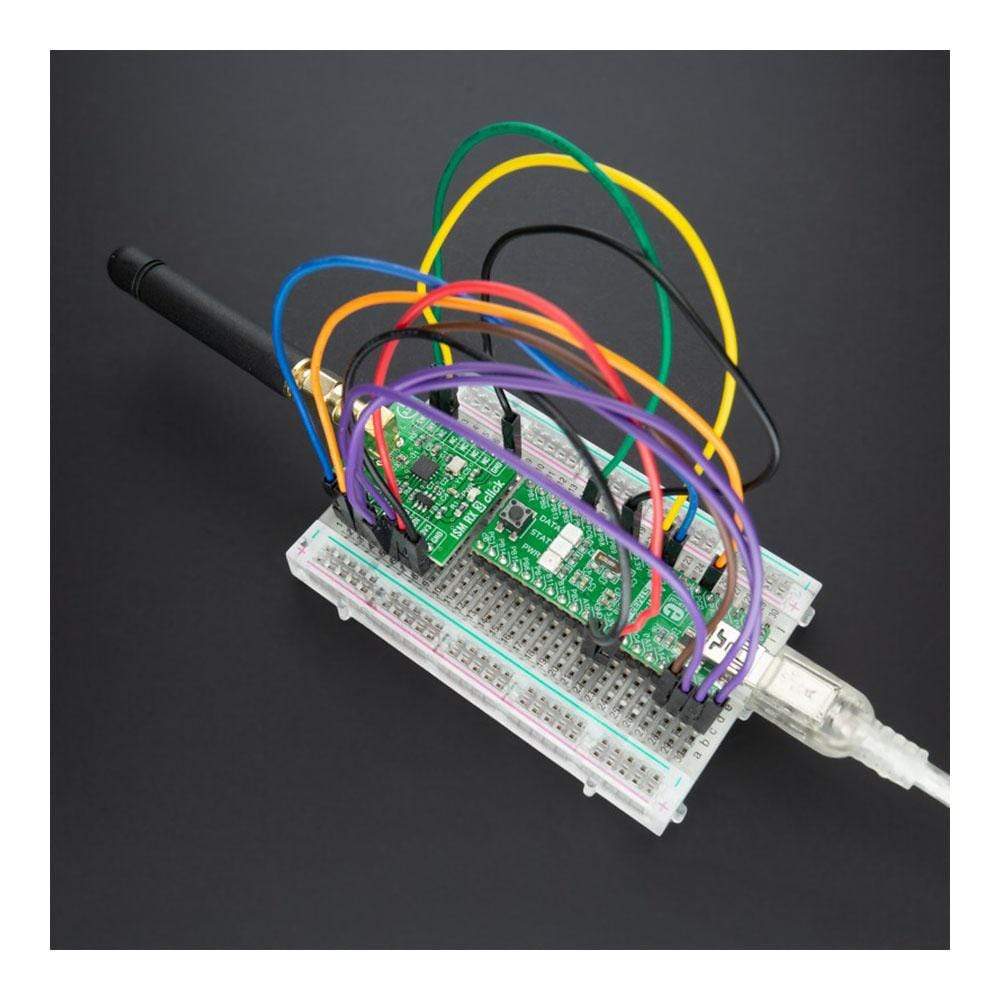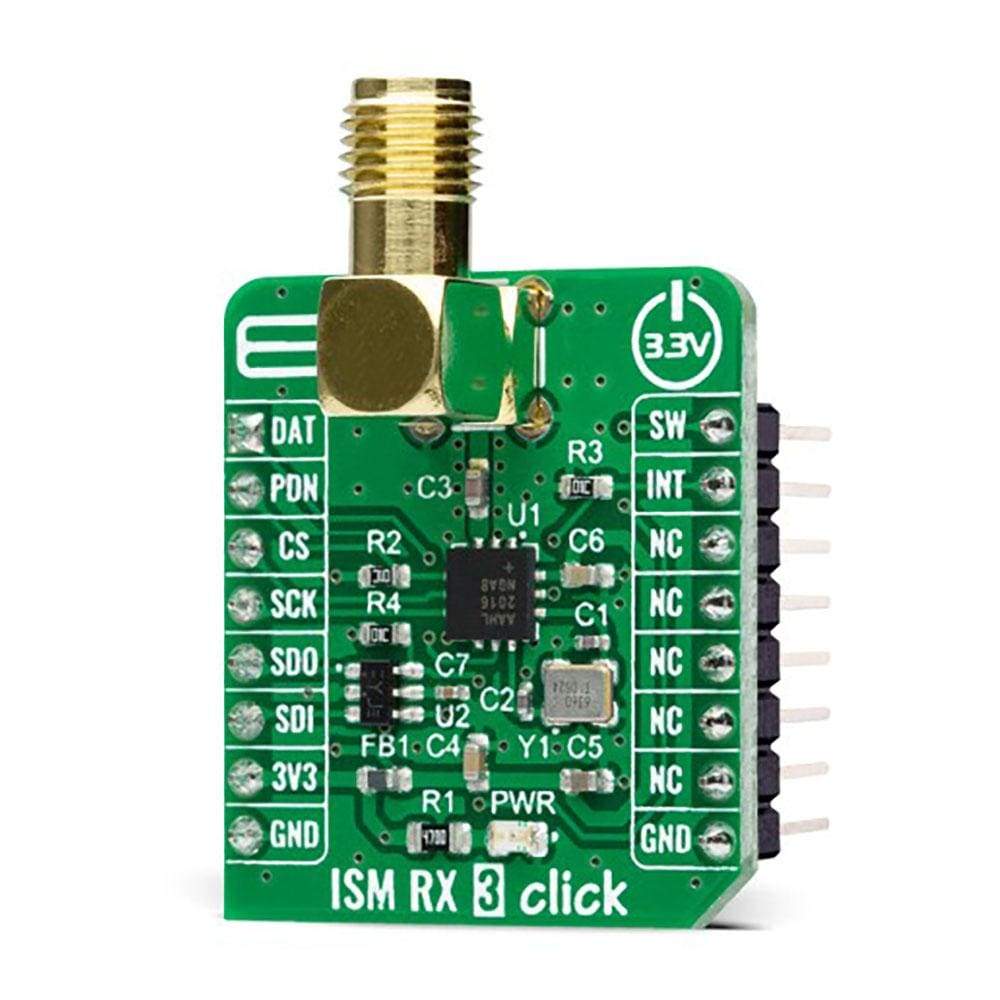
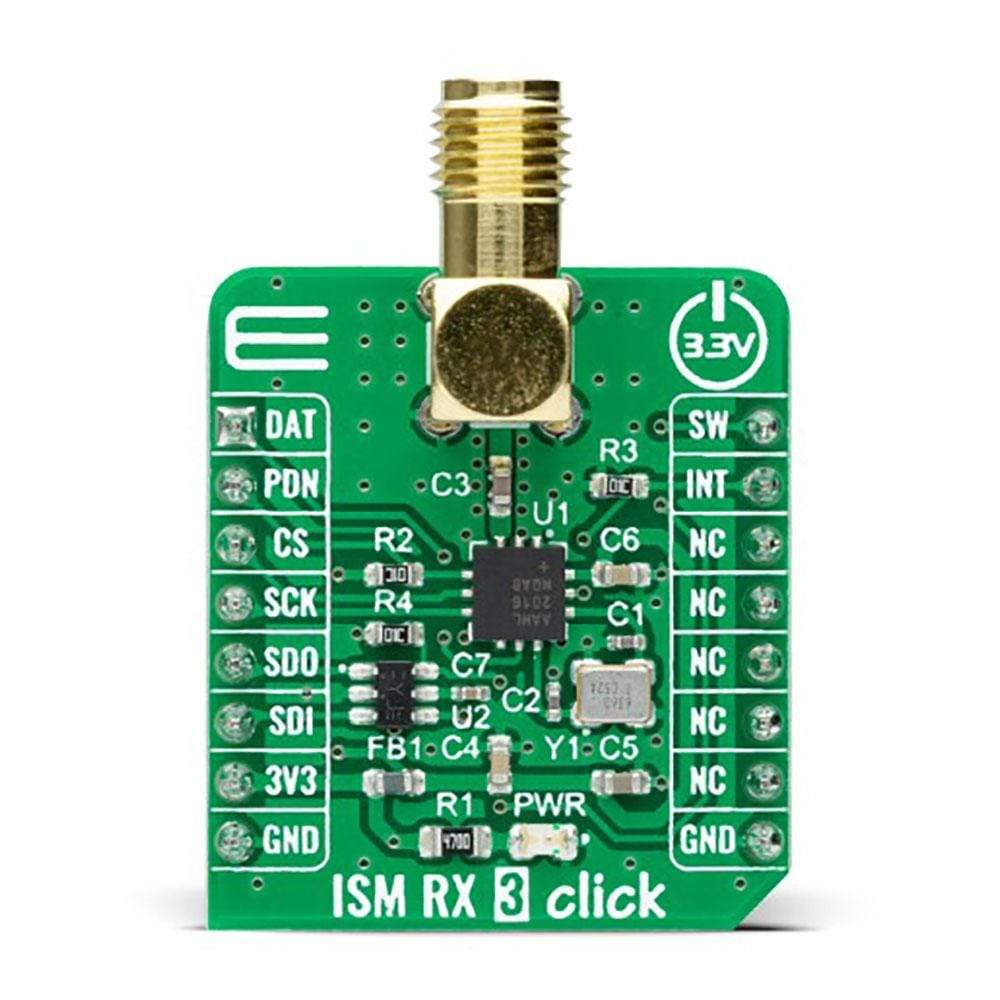
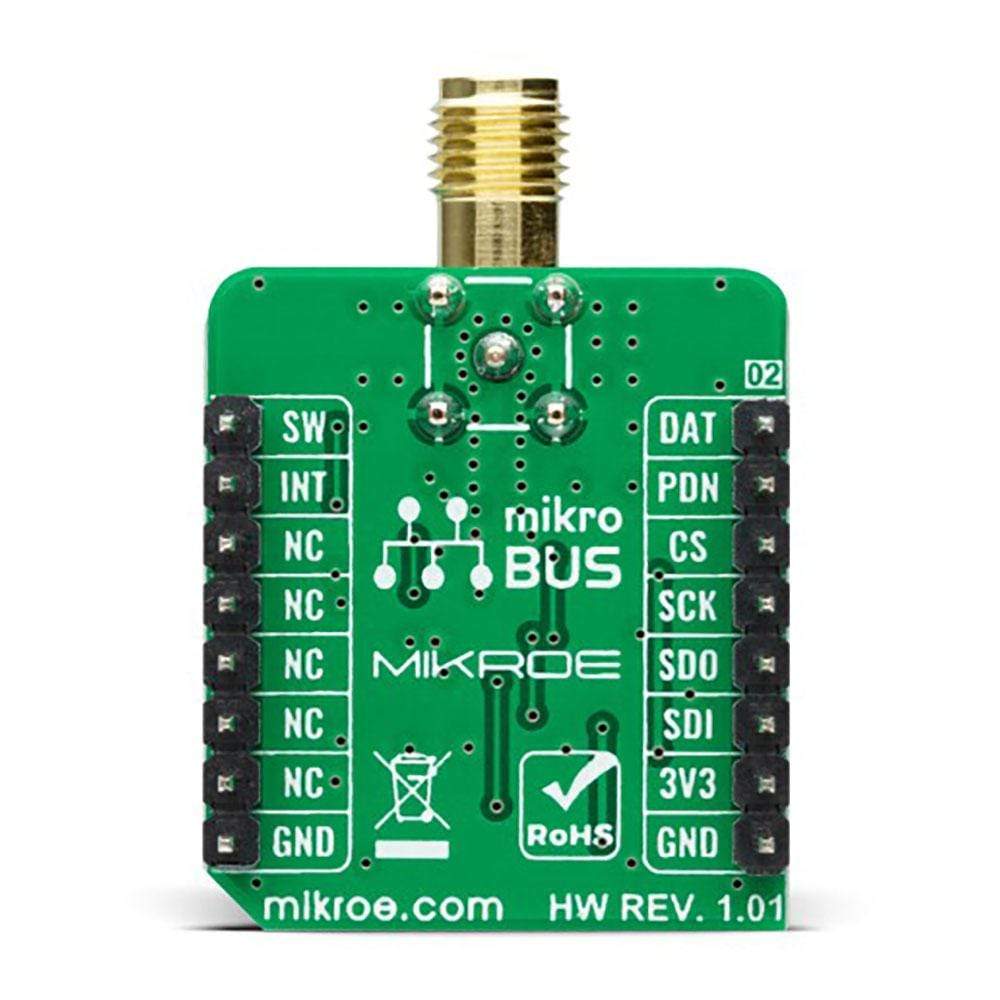
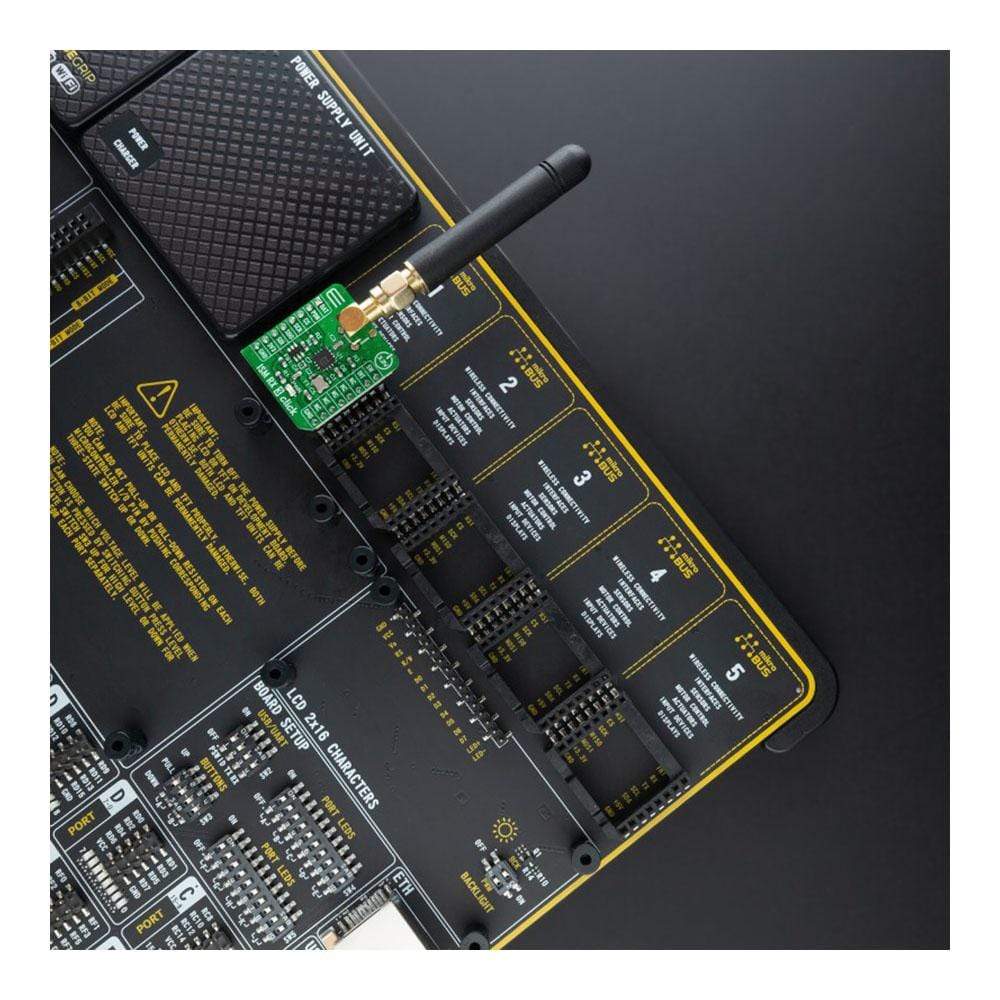
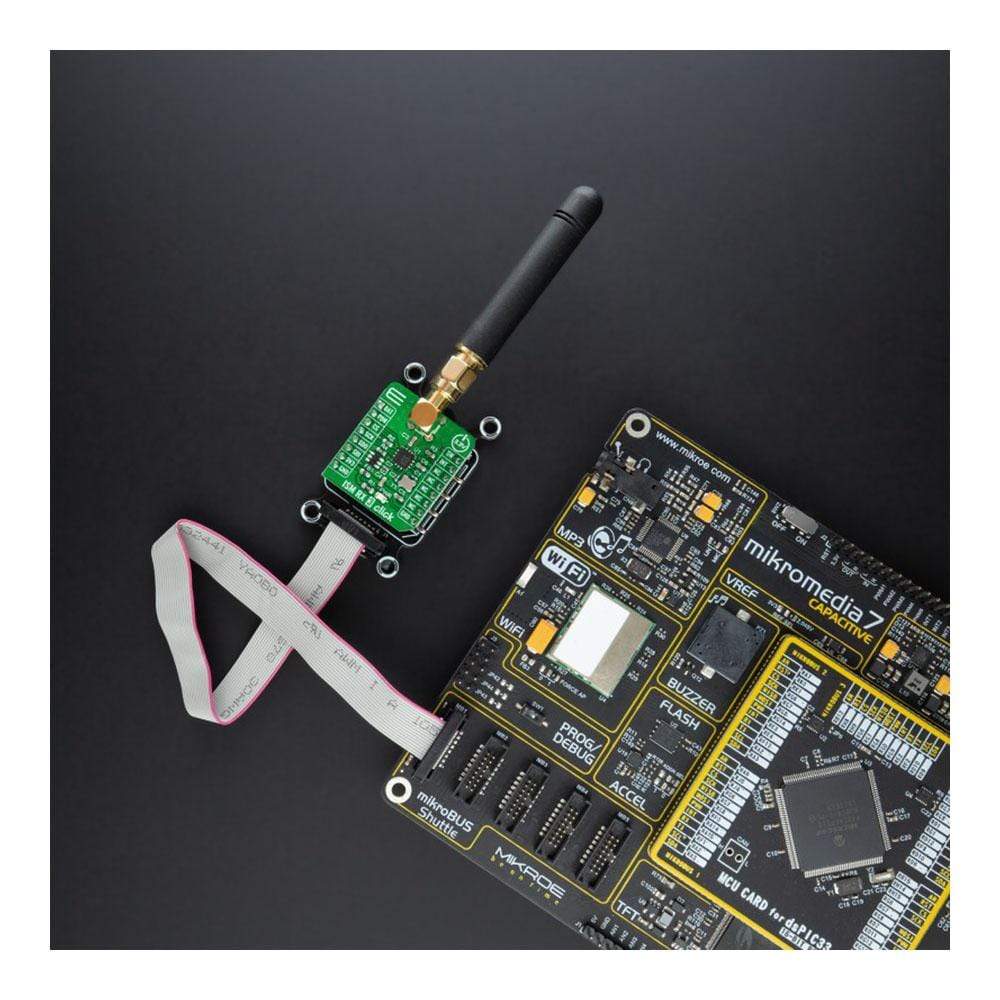

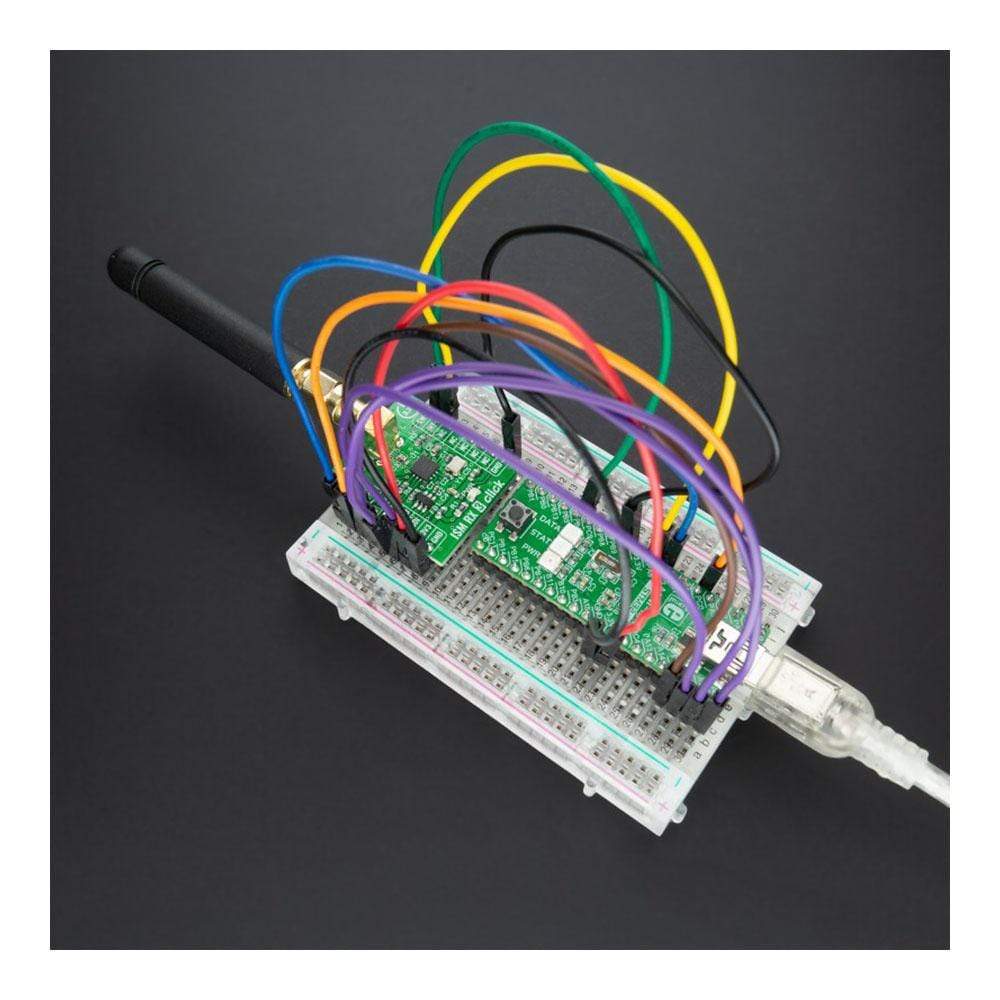
Overview
The ISM RX 3 Click Board™ is a compact add-on board that contains a Sub-GHz RF receiver. This board features the MAX41470, a high-performance, low-power receiver ideal for amplitude shift-keyed (ASK) and frequency shift-keyed (FSK) data from Maxim Integrated, now part of Analog Devices. It can be configured for three sub-1GHz bands using an onboard 16MHz crystal: 287MHz to 320MHz, 425MHz to 480MHz, and 860MHz to 960MHz, fully programmable through an SPI interface. The receiver has excellent RF sensitivity and long-range, allows input signals up to 0dBm of power at the RF input, and features a fully programmable, self-polling (duty cycling) mode with preamble detection and interrupt output to wake up an external MCU.
The ISM RX 3 Click Board™ is suitable for cost- and power-sensitive applications, such as home automation and security, building access control, remote keyless entry, garage or gate doors control, and similar applications.
Downloads
Le Carte à clic ISM RX 3™ est une carte complémentaire compacte qui contient un récepteur RF Sub-GHz. Cette carte comprend le MAX41470, un récepteur hautes performances et basse consommation idéal pour les données à modulation par déplacement d'amplitude (ASK) et à modulation par déplacement de fréquence (FSK) de Maxim Integrated, qui fait désormais partie d'Analog Devices. Il peut être configuré pour trois bandes inférieures à 1 GHz à l'aide d'un cristal 16 MHz intégré : 287 MHz à 320 MHz, 425 MHz à 480 MHz et 860 MHz à 960 MHz, entièrement programmable via une interface SPI. Le récepteur a une excellente sensibilité RF et une longue portée, permet des signaux d'entrée jusqu'à 0 dBm de puissance à l'entrée RF et dispose d'un mode d'auto-interrogation (cycle de service) entièrement programmable avec détection de préambule et sortie d'interruption pour réveiller un MCU externe.
La carte à clic ISM RX 3™ convient aux applications sensibles aux coûts et à la consommation d'énergie, telles que la domotique et la sécurité, le contrôle d'accès aux bâtiments, l'entrée sans clé à distance, le contrôle des portes de garage ou de portail et des applications similaires.
| General Information | |
|---|---|
Part Number (SKU) |
MIKROE-4828
|
Manufacturer |
|
| Physical and Mechanical | |
Weight |
0.02 kg
|
| Other | |
Country of Origin |
|
HS Code Customs Tariff code
|
|
EAN |
8606027383908
|
Warranty |
|
Frequently Asked Questions
Have a Question?
Be the first to ask a question about this.

